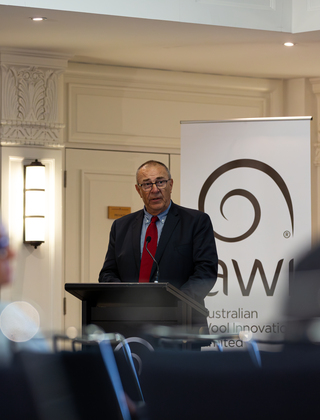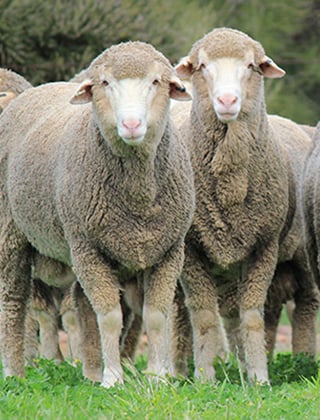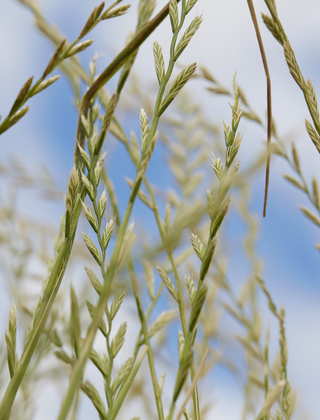Australian Wool Production Forecast Report December 2023
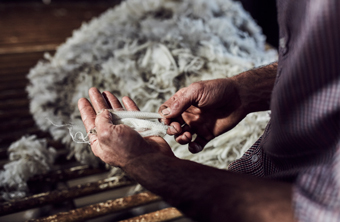
The latest Australian Wool Production Forecasting Committee’s forecast of shorn wool production for 2023/24 is 328 Mkg greasy, equivalent to the 2022/23 season estimate.
-
The latest Australian Wool Production Forecasting Committee’s forecast of shorn wool production for 2023/24 is 328 Mkg greasy, equivalent to the 2022/23 season estimate.
-
The number of sheep shorn is forecast at 72.2 million head, up 1.0% due to held over lambs and retention of older breeding ewes.
-
Shorn wool production is expected to increase in New South Wales (up 3.9%) and South Australia (up 2.6%) but decrease in all other states.
-
Average cut per head is forecast to reduce to 4.54 kg greasy (down 2.2%) due to dry seasonal conditions and a return to normal shearing patterns in most states
The Australian Wool Production Forecasting Committee (AWPFC) has updated its forecast of shorn wool production for the 2023/24 season. The third forecast is for production of 328 million kilograms (Mkg) greasy, unchanged from the 2022/23 estimate and a 4 Mkg greasy upward revision of the August forecast.
Committee Chairman, Stephen Hill said that "the revised December forecast reflected a larger number of sheep shorn as lower sheepmeat prices relative to wool have increased the number of held over lambs and retained older breeding ewes. The number of sheep shorn is forecast to rise to 72.2 million head, up 1.0% on 2022/23.”
“New South Wales is forecast to shear 26.9 million head this season (up 3.9%) with favourable seasonal conditions in southern regions of the state expected to compensate for the relatively poorer season in northern regions. The number of sheep shorn is expected to increase in both South Australia and Tasmania but decrease in Victoria, Western Australia and Queensland.”
Seasonal conditions have been average to dry across all key wool producing regions since the August forecast period. Shearing is reported to be on time and even ahead of the normal schedule in many regions, compared to last season when shearing was delayed by up to 3 months due to wet weather. This is expected to reduce average cut per head to 4.54 kg greasy, down 2.2% compared to 2022/23. AWTA key test data show no change in mean fibre diameter at 20.4 microns and a 1.7 mm reduction in staple length to 88.8 mm.
The earlier shearing combined with low sheepmeat and cattle prices have increased auction volumes, with AWEX first hand offering up 8.9% compared to last season and an increase in the volume of prem shorn wool (up 15%).
Producers in some regions are taking advantage of lower stock prices and purchasing good quality younger stock to replace their older age groups. There is also some indication of a move away from composite sheep production to a first cross enterprise to improve the value of wool produced from sheepmeat focussed enterprises.
Table 1: Summary of Australian wool production
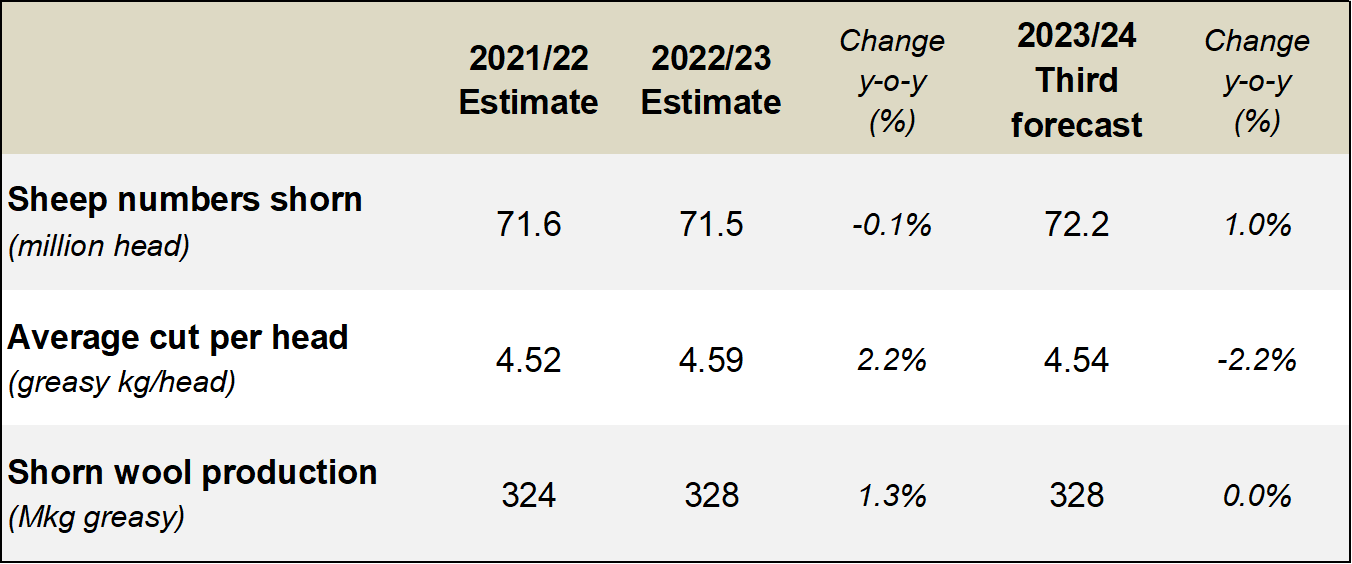
Note: Totals may not add due to rounding.
Table 2: Total shorn wool production by state
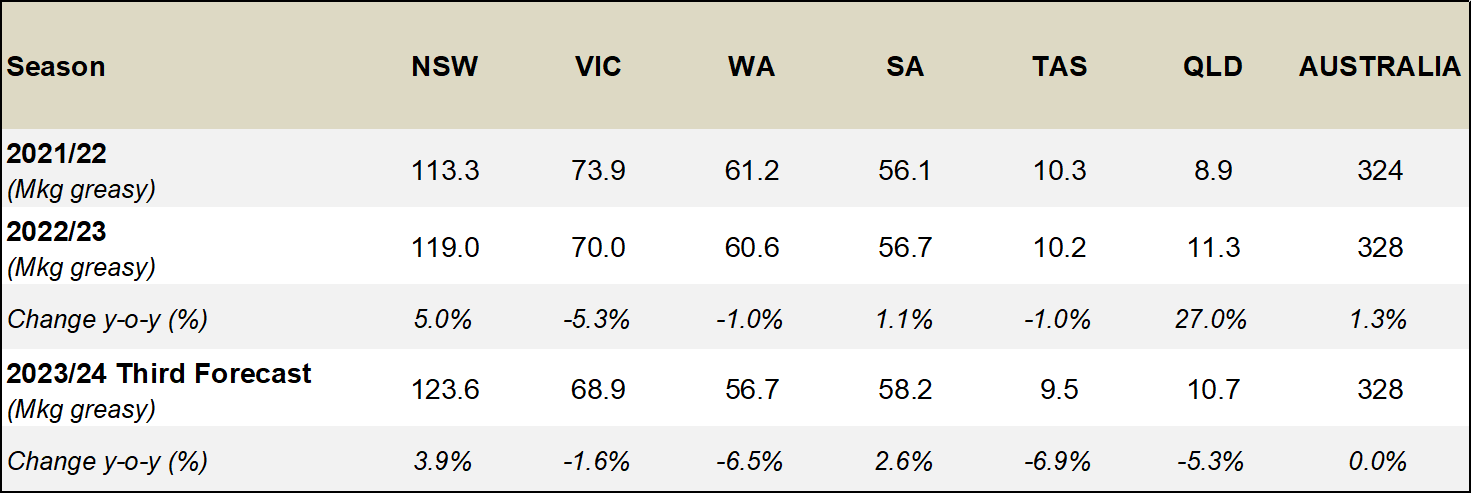
Note: Totals may not add due to rounding.
Table 3: AWTA key test data for 2022/23 and 2023/24 (July to November)
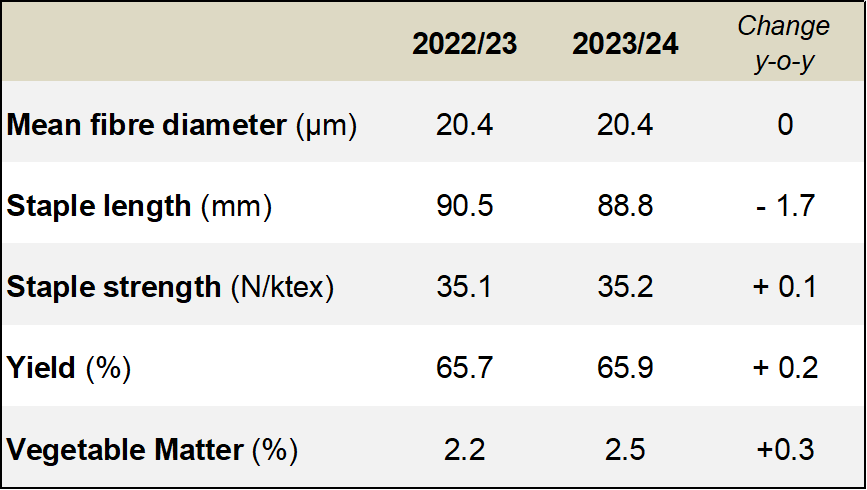
The National Committee drew on advice from the six State Committees, each of which includes growers, brokers, private treaty merchants, sheep pregnancy scanners, representatives from State Departments of Agriculture and the Australian Wool Testing Authority. Data and input were also drawn from AWEX, wool exporters, the Australian Bureau of Statistics, ABARES, and Meat and Livestock Australia.
The state and national Committees will next meet in mid-April 2024.
Released by:
Kevin Wilde
Australian Wool Innovation, General Manager, Consultation and Engagement
Mobile: +61 436 031 277






